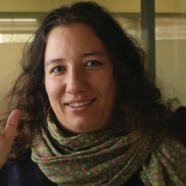
Inbal Goshen is principal investigator at the Edmond and Lily Safra Center for Brain Sciences (ELSC) at The Hebrew University in Jerusalem, Israel. Her interest in behavior and its biological foundation led her to conduct a dual PhD in Psychology and Neurobiology at the Hebrew University, studying the effects of cytokines on cognitive and emotional behaviors. Supported by the Rothschild foundation, she spent four years as a postdocotoral fellow in the lab of Karl Deisseroth at Stanford, using optogenetics to study the dynamics of long-term memory. Inbal then returned to Israel and established her independent lab at ELSC. Her team combines advanced tools to tag, manipulate, and image neurons and astrocytes in behaving mice, in an attempt to understand the role of both neurons a glia in memory processes, and specifically in the transition from recent to remote memory. Inbal was received a Starting Grant from the European Research Council (ERC), and is supported by two grants from the Israel Science foundation.
Another major project she is working on (in collaboration with her husband) is raising four kids.
“We are nothing more than the sum of our memories”. Our remote memories, weeks to decades long, define who we are and how we experience the world. Only a minority of recent memories (minutes to days long) will undergo a transition to remote memory, and those are usually the ones most important to the organism, as the longevity of a memory is tightly connected to its significance. We study how and when remote memories are selected, how are they physically different from recent ones, and which processes mediate the transition from recent to remote memory.
We are also studying the role of astrocytes in recent and remote memory, ensemble allocation, and even in the independent representation of memory features. Because even the basic features of this cell population are not well defined, we find ourselves also studying their anatomy in clear brains, and their neuromodulatory effects using electrophysiology.
To study astrocytes, memory, and astrocytes in memory, we employ 2-photon imaging (in mice behaving in a virtual reality) and miniature microscopes (in freely behaving mice) to image neurons and astrocytes in the hippocampus, as well as electrophysiology and behavioral tests. We combine all of those techniques with various chemogenetic and optogenetic modulations of both neurons and astrocytes.